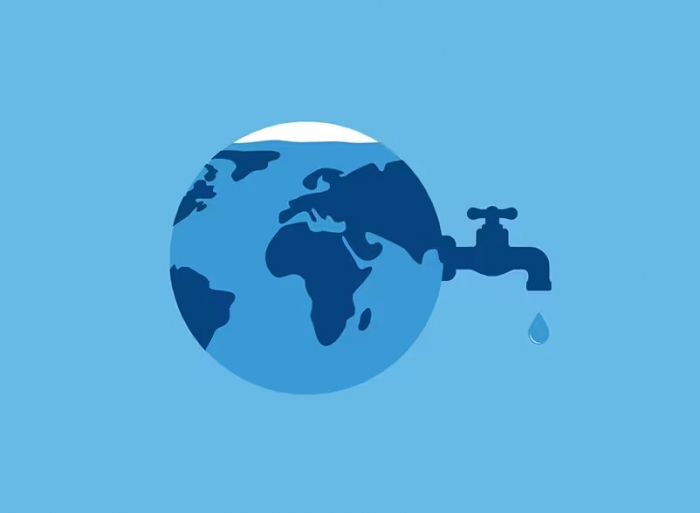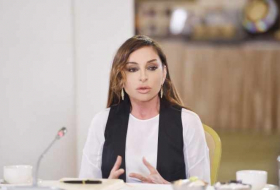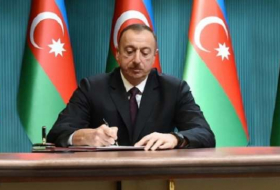AzVision.az interviews Denis Sorokin, head of regional information centre at the Scientific Information Centre of the Interstate Coordination Water Commission of Central Asia (Uzbekistan) to find out how the country tackles one of the most urgent issues around the globe.
- Drinking water scarcity is an urgent problem around the globe. What are the reasons behind the shortage?
‘The amount of water in nature remains constant. The problem is that the planet’s supply of clean drinking water is on the constant decline. This coincides with the ever-increasing water consumption. Industry, agriculture, and everyday life requires mostly fresh water. The main sources of fresh water – rivers and freshwater lakes – are distributed among the continents extremely unevenly. Europe and Asia, which account for 70% of world’s population, contain only 39% of global river water reserves. Only 7% of the total water supply worldwide is concentrated in Europe, with almost 20% of global population.
The freshwater scarcity throughout many regions of the world is further aggravated by the shortage of clean fresh water. WHO reports that almost 3 billion inhabitants of our planet consume poor-quality drinking water. Around 80% of all diseases in developing countries are related to clean water scarcity. Water is also an invaluable raw material that can be replaced by no other.
The reasons for freshwater scarcity stand as follows:
- Intensive rise in water demand due to the growth of global population and development of industries that require huge expenditures of water resources,
- Loss of fresh water due to reduction in river flow,
- Contamination of reservoirs by sewage.
Fresh water is lost in large amounts also due to:
- Water seepage through conduit walls,
- Violation of integrity of the main water conduits, supplying water to settlements and water supply network, delivering the water throughout these settlements,
- Irrational water leakage in residential and public buildings due to faulty water taps and sewer flushing devices.
Pollution of natural waters is also among the culprits, which usually occurs due to sewage discharge into freshwater bodies. Thus, surface and ground waters become unsuitable for consumption in both domestic and industrial water supply.’
- What threats does the freshwater shortage pose?
‘Some compare water to oil in terms of their significance. But unlike oil, we need water to survive. The World Resources Institute predicts that two-thirds of the world population will live in water-stressed areas by 2025. These are the Middle East, North Africa, and West Asia. Water scarcity is now recognized among main causes behind the Syrian war and is sure to create more conflicts and increase the number of refugees.
The very existence of human civilization may fall under threat. Three billion people from 50 countries may end up living in conflict zones in the immediate future due to the ‘blue gold’ shortage, which will lead to armed clashes and regional wars. Military conflicts over redistribution of raw hydrocarbon will seem like children’s play in comparison with the upcoming cross-border battles for the ‘tasteless, colourless and odourless liquid’… Many western experts believe so.
The world has seen over 500 ‘water’ confrontations over the past 50 years, 20 of them escalating to hostility. Ban Ki-moon, former UN Secretary General, officially admitted: ‘Fresh water may become the main cause of regional wars in the immediate future’.
They have also clearly defined the ‘powder barrels’ for water shortage: Lake Chad, the Brahmaputra, Ganges, Zambezi, Limpopo, Mekong Senegal, Jordan, Nile, Tigris, Euphrates, Aras, Irtysh, Kura, and Ob rivers… Asia is basically the high-risk zone.
The waters of Brahmaputra have more than once been the bone of discord between India and the Celestial Empire. It is quite difficult to imagine the possible consequences of the large-scale hydraulic projects developed in China. Millions of people in India and Bangladesh, whose lives largely depend on the Brahmaputra, will be impacted.
Even the USA and Canada fail to agree on how to share water resources, which is not even aided by having a joint commission overseeing the operation of the Great Lakes. Similar problems are brewing at the US-Mexico border.
The Former British Defence Secretary John Reid even admitted that the water crisis is turning into a global security threat and the British armed forces must be prepared to resolve conflicts, even armed ones, over dwindling water resources.
Algeria, Hong Kong, Singapore, and the coastal regions of the former Yugoslavia are already making do with imported water. 40% of the world population does not currently have access to normal drinking water. Thousands of children and adults die every day from thirst or poor-quality water.
We see all the signs of an acute global crisis.
The Academic Supervisor at the Institute of Water Problems, Doctor of Economics, Corresponding Member of the Russian Academy of Sciences Victor Danilov-Danilyan is quite optimistic: ‘…Scientists have been warning us about ‘wars over water’ that our century will be doomed with. I do not think that we will have to fight over water: After all, the international community has been making certain progress in preventing conflicts. However, I wholeheartedly agree with the thesis of ‘Forget oil, water is what we will need’. The advice, President John F. Kennedy gave us all back in 1962, is growing more relevant.’
We can now confidently say that the ‘hour of water’ has now arrived, and we must be very serious in dealing with the problems it produces. The world has long since entered an era of wars over resources. And it is clear as day that no one is willing to give up even a drop.’
- What are the solutions of the drinking water shortage? What are the actions we need to take to conserve water resources?
‘The United Nations recognized that fresh water can no longer be considered a renewable resource and defined access to clean water and sanitation as human rights in 2010. They have also included them in the UN Sustainable Development Goals, while 193 member states agreed. The World Bank estimates that ensuring universal access to safe drinking water will require more than $1.7 trillion.
Scientists across countries are wrapped up in the problems of purifying contaminated waters, desalinating sea waters and searching for new sources for Adam’s ale. There are even projects involving towing Antarctic icebergs to the shores of California, Saudi Arabia, and other countries. American experts have already assessed that six tugboats can transport an iceberg of 10 billion tonnes. Such an ice mountain could supply fresh water to a large terrain for a year.
There are several approaches and technologies to solving the freshwater shortage.
1. Preserving freshwater reserves in reservoirs. This allows not only retaining water resources, but also having a supply in case of unforeseen disasters.
2. Water processing technologies. Domestic and wastewaters must be processed and purified, which will allow saving a significant amount of fresh water.
3. Desalination of sea waters. The desalination processes have been growing more advanced and requiring fewer tangible costs. Converting salt waters to fresh ones is an excellent solution.
4. Breeding techniques for cultivated crops. Modern genetic breeding technologies now allow us to develop crops, resistant to saline soils. Such plants can be irrigated with salt waters, which translates to saving a significant amount of fresh water.
5. Drip irrigation. This technique is another interesting method to save fresh water while irrigating plants. A small diameter tube network is installed in an agricultural terrain. These directly deliver water to the plant and its roots (if the system is installed underground), which significantly reduces freshwater consumption.
6. Wastewaters. Agriculture consumes a gargantuan amount of water resources, which can be replaced with wastewaters. This practice is not applicable to all cases but produces efficient results when applied.
7. Artificial forests. The more arid parts of the world have found an unusual solution to the freshwater shortage, which embodies laying out artificial forests in deserts. It has not been practiced yet, but work is underway.
8. Wells, glaciers, etc. Glaciers concentrate huge reserves of fresh water. Technically melting some of them would release a significant amount. Another option for extracting fresh water is drilling deep wells.
There are even actions we can take in everyday life to improve the quality of drinking water:
- People, who live in areas with little water, should consume it with a small amount of vinegar: 1 litre of water takes around 1-2 teaspoons of apple cider vinegar and honey, 3-5 drops of 5% iodine. It takes a few minutes for microbes to die in such environment.
- They can make a wool wick, lower one end to a bowl of water, and the other to an empty one. While water drips from the full dish to the empty one, it will have already been well purified. This is an excellent method. Water can be purified several times this way before consumption.
- Boiling bitter or bad water with clean clay and wool balls, then taking and squeezing them out. The squeezed water will be of much better quality.
- Salt water can be drunk by adding haw.
- Water can be mixed with clean soil and let to settle.
One might think nothing depends on them alone and there is nothing they can do as an individual.
- First, you are not alone. There are more people on earth who understand this. There are more people, who are no longer negligent, scientists and ordinary citizens who care about the future of the planet. Many public organizations stand to protect water. For instance, Japanese schoolchildren have taken patronage over all water sources. This is an amazing example to follow!
- Second, you can simply turn off the dripping tap, stop throwing the hose while watering the garden because trees do not need flowing water all the time, not litter water when you go to the country, and not clog the canals in the city.
- Finally, never think that a drop you have saved will not change anything. The natural water cycle is a fine balance that can be affected even by a single drop.’
- What are the reasons behind water resource shortage in Uzbekistan?
‘The Republic of Uzbekistan is at great disadvantage in terms of water resource availability. The hydrographic network of the Aral Sea basin stands out with a rather uneven streamflow distribution, where only 10% of water resources take shape on the territories of the country. This translates into a large periodic dependence on the water volumes, arriving from Central Asian neighbouring countries. Melting waters account for 60% of all water resources in Uzbekistan, both in the Syr Darya and Amu Darya basins. Additional rain and glacier inflow varies for river basins, standing at 15% of glacier inflow and 25% rain for Syr Darya and 25% glacier and 15% rain for Amu Darya.
Water resources standing at a 90% supply available in Uzbekistan amount to 59.2 km3 at present. The country consumes up to 62-63 km3, 58-59 of which is supplied for irrigation, in years of high-water content. This amount currently satisfies the water requirements of both non-irrigated sectors, but also agriculture. In low years, however, the available water resources plummet to 54 km3 and to 47-48 in acute low years, while the water supplied for irrigation drops to 42-44 km3. At the same time, there have been much more of those years with an acute low water content.
The climate in Uzbekistan has become twice as warmer, which translates to intense warming of 0.29°С per decade. This exceeds the average warming rate in the northern hemisphere. If these trends persist, they will produce grave consequences for the country. Our natural resource potential has already started suffering from climatic change: a growing shortage of available water resources and quality deterioration, degrading glaciation and reducing snow cloak in the mountains, which leads to less access to high-quality drinking water for the population, more intense land degradation and desertification and loss of biodiversity, increased risks in agriculture, enhancing water demand, declining yields of some agricultural crops, dropping productivity of pastures and feed supply, accordingly of livestock production, ultimately leading to a grave threat to food security.’
- What is Uzbekistan doing to avoid this?
‘The current water resource shortage will worsen as the GDP and population grow. Providing for the water deficit cannot be limited to simply reducing water supply under these conditions. The shortage will only grow judging by the development and direction of the political and socio-economic situation. Increasing water availability and a more efficient consumption of the available water resources are the most urgent tasks primarily for agriculture, as it is the main water consumer.
The country sports different views on potential mitigation of the consequences of water shortages through conserving water countrywide, fully regulating river flows, improving the operation and technical facilities at irrigation systems, introducing water-saving irrigation technologies, cultivating, or introducing drought-resistant crops.
By no means diminishing the importance of these actions, we must firstly seek non-traditional sources to increase water resources and introduce broad organizational and technological methods into industrial practice to boost productivity of water, supplied to irrigated fields.
A retrospective analysis of the findings of long-term studies, conducted in various irrigated zones, and data by water management and operational organizations all define the potential for increasing available water resources through employing non-traditional sources, such as drainage, brackish groundwater, and wastewaters from industries, municipal institutions and livestock breeding complexes.
Experts estimate that depending on the water content of the year, the collector-drainage runoff from irrigated territories stands at 25.6 to 27.5 km3 in high-water, 21.6 to 25.6 km3 in medium-water and 19.9 to 21.6 km3 - in low-water years. The reserves of fresh and slightly brackish waters suitable for consumption stand for 16.3 km3, while wastewaters from industry, agriculture, and municipal services at 2.4 km3. Many countries effectively employ non-traditional water sources in industry (the USA, Japan, Israel) and agriculture (Southeast Asia, Israel, etc.).
Samir Veliyev
More about: #CentralAsia #Uzbekistan















































